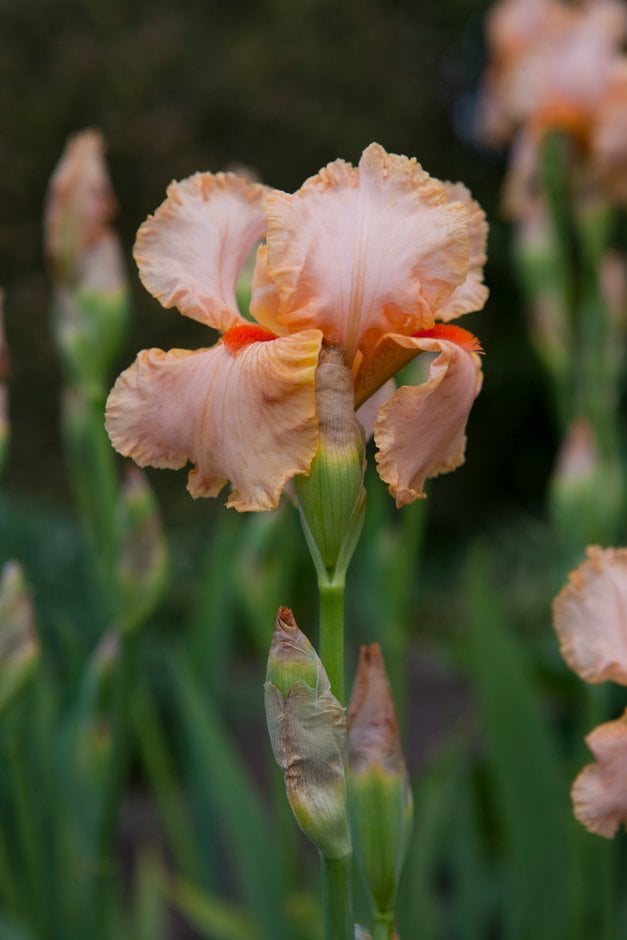Iris 'Party Dress' (TB)
iris 'Party Dress'
A rhizomatous, clump-forming perennial to 80cm tall with erect, glaucous foliage. Ruffled, fragrant flowers borne in summer have pale peach standards with deeper coloured falls, tangerine-orange beards and are suffused with burnished gold

Buy this plant
Size
Ultimate height
0.5–1 metresTime to ultimate height
2–5 yearsUltimate spread
0.1–0.5 metresGrowing conditions
Moisture
Well–drainedpH
Acid, NeutralColour & scent
| Stem | Flower | Foliage | Fruit | |
| Spring | Green Grey Silver | |||
|---|---|---|---|---|
| Summer | Gold Orange Pink | Green Grey Silver | ||
| Autumn | ||||
| Winter |
Position
- Full sun
Aspect
East–facing or South–facing or West–facing
Exposure
Exposed or Sheltered Hardiness
H7Botanical details
- Family
- Iridaceae
- Native to GB / Ireland
- No
- Foliage
- Deciduous
- Habit
- Columnar upright
- Potentially harmful
- Harmful if eaten. Wear gloves and other protective equipment when handling. Pets: Harmful if eaten. For further information and contact numbers regarding pets, see the HTA guide to potentially harmful plants
- Genus
Iris may be rhizomatous or bulbous perennials, with narrow leaves and erect stems bearing flowers with 3 large spreading or pendent fall petals, alternating with 3 erect, often smaller, standard petals, in late winter, spring or early summer
- Name status
Accepted
- Horticultural Group
- Tall Bearded irises are herbaceous rhizomatous perennials to 70cm or more, with flowers 10-20cm across, bearded on the falls, in late spring and early summer
How to grow
Cultivation
Grow in well-drained, fertile, neutral to slightly acid soil in full sun; sun on the rhizomes will help to encourage flowering. See also bearded iris cultivation
Propagation
Propagate by division of rhizomes from midsummer to early autumn; see dividing irises
Suggested planting locations and garden types
- City and courtyard gardens
- Coastal
- Cottage and informal garden
- Wall side borders
- Flower borders and beds
Pruning
Remove any dying foliage in autumn, old flower stems can be cut down after flowering. Tall cultivars can have their leaf fans trimmed to one third of the total height to reduce wind rock while the plants are establishing
Pests
Diseases
May be susceptible to aphid-borne viruses, bacterial soft rot and grey moulds; see Iris diseases
Get involved
The Royal Horticultural Society is the UK’s leading gardening charity. We aim to enrich everyone’s life through plants, and make the UK a greener and more beautiful place.